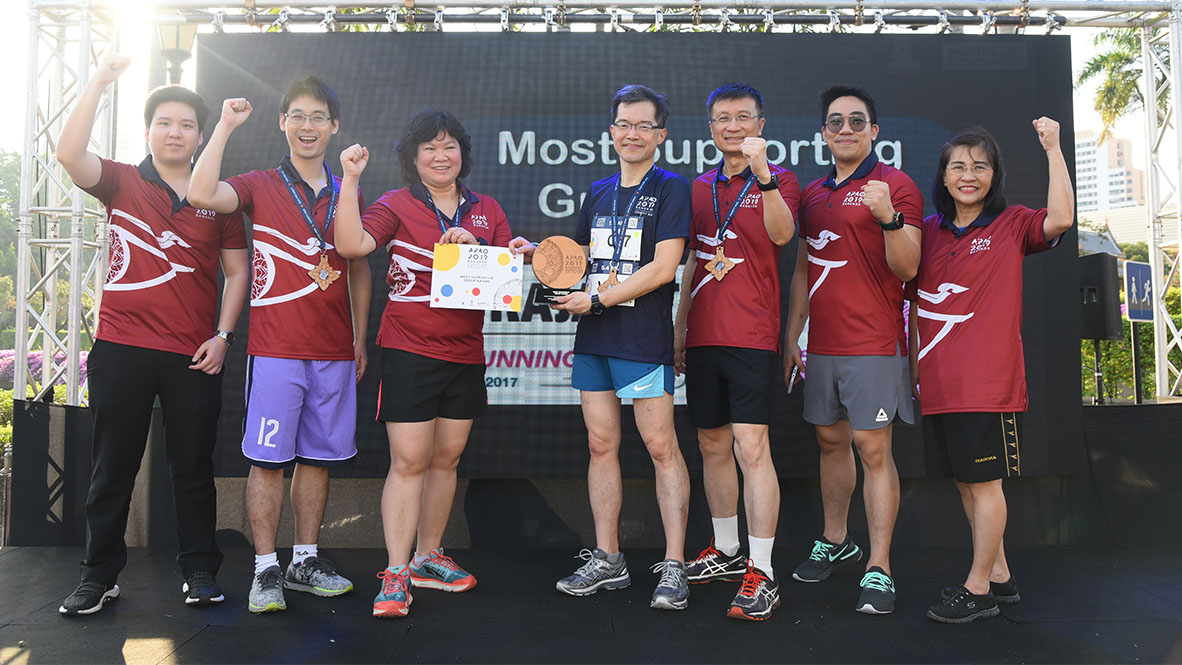At this year’s Women in Ophthalmology (WIO)-sponsored symposium on Day 4 of the 128th Annual Meeting of the American Academy of Ophthalmology (AAO 2024), a powerhouse panel of female ophthalmologists came together to dish out the secret recipe for not just surviving, but thriving in their male-dominated field.
Forget the stiff lectures and robotic career advice—this session was more like a masterclass in owning your worth while juggling a thousand things with style. The event, led by some of the sharpest minds and fiercest women in ophthalmology, took a hard look at what it really takes to carve out a sustainable career in a field where the stakes are high and gender equality still has some catching up to do. From setting boundaries like a pro to knowing exactly when and how to flex your negotiation muscles, these experts didn’t hold back in showing women how to level up, lead and leave a legacy.
Put on your own life vest
Let’s be real—women in ophthalmology are known for being powerhouse multitaskers. But with all that juggling, how do they make space for self-care and say no without feeling guilty? If you’re anything like Dr. Melissa Summerfield (USA), you probably take care of everyone around you—your patients, your family, maybe even the occasional friend in need of an impromptu consultation at a party. It’s easy to overlook the person who deserves the most care: YOU.
Dr. Summerfield delivered a heartfelt wake-up call when she shared her father-in-law’s story. After surviving cancer, he pushed himself to return to his busy practice—until one fateful day, he fell asleep at the wheel, leaving him with a spinal cord injury. “This is an extreme example,” she explained. “But it highlights what happens when we prioritize work over our health.” For many women in ophthalmology, this is an all-too-familiar narrative. They keep pushing, driven by medical culture and their type-A tendencies, until something forces them to stop.
The numbers don’t lie. Roughly 40% to 60% of ophthalmologists report symptoms of burnout, and women in the field feel it more acutely. So how do they take a step back? Dr. Summerfield’s answer is self-care. But don’t worry, this isn’t another call to squeeze in yoga between surgeries and school pickups. Even a quick reset can make a difference, like “taking three deep breaths between patients,” she suggested. Breathing helps calm the parasympathetic system, getting your mind back in the game.1
Now, let’s talk about the biggie: learning how to say no. And not just saying no, but saying it with zero guilt. Dr. Lauren Yancey (USA) admitted she’s “unusually good” at this. “Some people are automatic yes, and I think I’m an automatic no,” she quipped, drawing laughter from the audience.
She encouraged women to rethink their commitments, particularly in areas like school parties and homemade Halloween treats. “You have my permission to buy things that look homemade…and call it a day,” she joked, adding that kids remember the time spent with them, not the intricate details of a school event.
Saying no also extends to the workplace. Dr. Yancey underscored the importance of sticking to your role and avoiding explanations for surgeries you don’t perform. “I am not the authority on someone else’s surgery,” she pointed out. Instead, if a patient asks what another surgeon might do, she replies with, “[These are] things that I haven’t seen or done since residency…Why don’t you speak to them about it?”
Ultimately, both Dr. Summerfield and Dr. Yancey remind women in ophthalmology that taking care of themselves isn’t a luxury—it’s a necessity. And sometimes, it starts with some deep breaths and maybe a simple, unapologetic “no.”
Pushing the boundaries
Navigating the path to success in academic ophthalmology can be a delicate dance of knowledge, self-awareness, and strategy. “Thriving begins with a mindset,” said Dr. Rukhsana Mirza (USA), emphasizing that a growth-oriented approach is essential for flourishing in one’s field.
She introduced the concept of ikigai, where “what you love, what the world needs, what you’re good at, and what you can be paid for” intersect. Finding this balance, she argued, is key to a fulfilling academic career. But equally important, she noted, is recognizing your strengths and learning how to collaborate effectively. “It’s not for you to figure out how to be best at everything, but how to harness what others are best at and work together,” she added.
But thriving isn’t just about excelling in research or teaching—it’s about navigating the tricky waters of negotiation. Dr. Anne Louise Coleman (USA), who spoke on this subject, stressed the importance of trust in any negotiation. “If you don’t have trust, you’re not going to be able to really negotiate,” she said. For women in academia, this trust extends both ways—trusting your institution and your colleagues, while also recognizing your own worth.
Self-advocacy, as Dr. Coleman highlighted, requires a deep understanding of one’s own values and priorities. “Is it your mission, or is it money?” she posed the question. “There’s nothing wrong with either, but you need to be honest about what drives you.”
Dr. Coleman also warned against ultimatums during negotiations. “It really changes the negotiation,” she said. “ It makes it so that it’s almost adversarial, and people aren’t going to respond the way you think they will,” reminding the attendees that while they are all unique, they are all also replaceable. Instead of threatening to leave, Dr. Coleman advised “to really focus on those skills and talents that you bring to the table.”
The long game
Building a sustainable career for women in ophthalmology isn’t just about mastering the technical aspects of the field—it’s about reinventing yourself along the way. Dr. Jane Bailey (USA) highlighted that this reinvention is key to finding long-term fulfillment. “You think you finish your training, pass your oral boards, get a job, and that’s it. But for many, their first or second job isn’t the perfect fit,” she said, noting that on average, recently graduated physicians stay at their first job for less than two years.
Dr. Bailey shared her own journey, one marked by multiple career shifts—military service, private practice, solo practice—before taking the leap to pursue a mid-career neuro-ophthalmology fellowship. “I moved my family and sold my shares in a really good practice. And I don’t recommend that for everyone, but I got everything I wanted,” she said. Her message? Be intentional with your career choices and take the time to reflect on what truly brings joy.
Dr. Bailey also emphasized the importance of reassessing your career regularly. “You should re-balance your portfolio every three to five years,” she said, referencing a tool she found through the Harvard Business Review to help define strengths, values and what motivates you. Whether through new habits or finding joy in lifelong learning, Dr. Bailey urged attendees to be strategic about how they spend their time and energy, continuously reinventing themselves to stay passionate in the profession.2
Editor’s Note: Reporting for this story took place during the 128th Annual Meeting of the American Academy of Ophthalmology (AAO 2024) from 18-21 October in Chicago, Illinois, USA.
References
- Sedhom JA, Patnaik JL, McCourt EA, et al. Physician burnout in ophthalmology: U.S. survey. J Cataract Refract Surg. 2022;48(6):723-729.
- Strack R, Dyrchs S, Bailey A. Use strategic thinking to create the life you want. Harvard Business Review. February 21, 2024. Available at: https://hbr.org/2023/12/use-strategic-thinking-to-create-the-life-you-want. Accessed on October 21, 2024.



